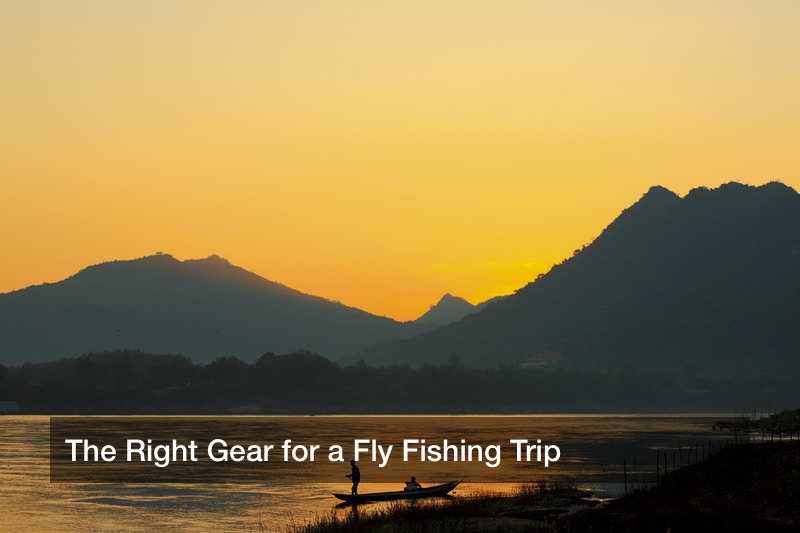The Right Gear for a Fly Fishing Trip

Fishing is one of the most universal sports of all, and today, it is indeed categorized more as a sport than a means of collecting food. In ancient times, fishing was done like this, but today’s commercial fishing boats handle the gathering of seafood for the world’s markets. So, anglers of all ages can visit lakes, creeks, and streams to fish for fun, and this sport is plenty popular. Studies show that in 2017, around 51.59 million people went fishing, and in that same year, 11.6 million youths aged six to 17 took part in fishing, too. Now, how to fish? There is always the conventional means of fishing, but many anglers prefer fly fishing, which offers its own advantages. Anyone who is interested in getting into fly fishing can visit online and physical retailers to get fly fishing tackle bags, fly rod reels, fly fishing outfits, lures, and more before their first real fishing trip.
Fly Fishing Tackle Bags and More
Fishing, like most hobbies, requires the proper gear, and a first-time angler can find practically everything that they need at a local retailer for outdoor goods. While there, the customer can consult the store’s staff for suggestions and ideas, so they can find fly rods, lures, fly fishing tackle bags, and even clothes that are best for their budget. Modern fly fishing tackle bags are quite convenient and tough, and they come with straps for transport and feature inner pockets, compartments, and zippers to store just about anything. Meanwhile, a fly fisher will need not only some quality rods and reels and line, but also lures and clothes for the job.
Fly fishers can use live bait such as crickets, but often, they make use of artificial lures, such as those with little feathers on them to make them look like insects. And why special clothes for fly fishing? Bear in mind that fly fishing entails standing not on a pier or on a boat, but directly in the water. No one wants to get soaked, so a fly fisher will wear tall, warm, waterproof rubber boots, and such boots may be tall enough to form overalls of a sort. As a bonus, the angler can also wear a vest with pockets, so they can easily store their sunglasses, spare lures or line, and much more within arm’s reach. A fly fisher is also urged to wear a wide-brimmed hat to keep the sun off their skin during extended periods, and the angler should also wear sunglasses to protect their eyes from sunlight glaring off the creek or stream’s surface.
Going Fishing
Once an amateur fly fisher has all the gear they need, now they can accompany a more experienced fisher and learn the ins and outs of fly fishing. What is there to know? Not only will the angler learn about the location and habits of certain fish species, and learn how to choose the right bait, but they can also learn the proper line casting method. Fly fishing sets itself apart with its rod casting; while regular fishing rods use the bait’s weight to draw out the line, fly fishing bait is too light for that. Instead, the fly fisher will cast the line itself, and doing this correctly will throw out the bait to the desired spot. The advantage of this method is that the bait and line land gently, and thus don’t create any splashes that could scare off fish nearby.
Fly fishers can also choose whether or not to keep the fish that they catch at a stream or creek. In the case of capture, the angler should have a live capture bucket filled with water on hand, and fly fishers practicing “catch and release” will remove the bait and hook from a caught fish and return it to the water. If the fly fisher is keeping fish, then they must be mindful of local wildlife conservation rules, which should be posted on nearby signs. These rules will set a minimum length for any captured fish, and a maximum number of fish caught per species. Following these guidelines helps maintain a stable breeding population, and future anglers can fish at that spot, too.








